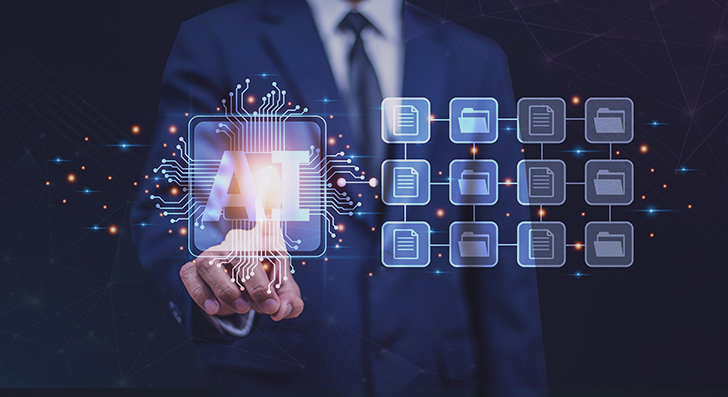Amid the highly dynamic digital times, management of huge volumes of documents and extracting business-critical insights from them is no less than a taxing activity for the in-house teams of businesses. Moreover, with the ever-increasing data and need to process complex documents faster, businesses no longer rely on traditional, manual document processing services, and in fact, several of these methods are often inefficient.
Since last few years, Intelligent Document Processing Services (IDP) has established its foothold across many industries to fuel the automated processing of various documents. Parallelly, new-age technologies, including Generative AI (Gen AI) are rising to the action due to the distinctive advantages they deliver as compared to the nascent AI, such as content generation capabilities and Natural Language Understanding. Now when any IDP solution is integrated with Gen AI, it leverages Gen AI’s capabilities of contextual understanding to categorize and collect relevant data from raw, unstructured documents efficiently, leading to improved accuracy, increased efficiency in data categorization, and reduced dependency on manual intervention.
Understanding Intelligent Document Processing
IDP or Intelligent Document Processing can be defined as any solution or software that extracts data from various documents such as PDFs, emails, images, CSV, hand written notes etc., understands the context, and classifies and extract the business-relevant data for further processing by using technologies such as NLP, computer vision, and ML. Being non-invasive solutions, they can be easily integrated with any existing automation platforms, systems, or internal applications by leveraging the services of intelligent document processing companies. The key processes involved in intelligent document processing entails:
- Pre-processing: Enhancing the quality of input document for machine readability
- Categorization: Indexing and categorization of documents through ML/deep learning and text mining
- Extraction: Leveraging ML and NLP to extract business-relevant data
- Post-processing:Validating the extracted data by applying business validation rules
Though when compared with OCR tools, intelligent document processing through document processing companies extends multiple benefits, certain limitations pull them back such as:
1. Scarcity of training data: Lack of sufficient number of annotated datasets in documents for ML models training which is further aggravated by data privacy issues in highly regulated industries.
2. High training time: Training of ML models still relies on manual annotations which is a time-consuming process, especially for complex documents like loan documents, electronic medical records, and legal documents, which requires additional industry expertise.
3. Moderate accuracy: With complex data types and documents like barcodes, graphs, tables, annual reports, and contracts, document processing companies often face the challenge of achieving greater accuracy levels as these data types require advanced ML capabilities for accurate data extraction.
4. Unstructured Document Processing: For unstructured documents, the processing classical solutions is challenging as they lack the advanced capabilities that can provide detailed document comparison, extraction of specific paragraphs, and conduct a more thorough and intelligent search by conversing with documents.
5. Absence of post-processing functionalities: More and more businesses are now looking for advanced IDP solutions that can develop downstream analytics models, deploy domain-specific business rules, create any kind of document on the basis of text prompt, generate new document types and tailored summaries, all of which the traditional IDP solutions can’t perform.
Reinforcing IDP with Gen AI Capabilities for Optimal Efficiency
Keeping in mind the challenges pertaining to classical IDP solution and increasing market demand for more efficient outcomes, there requires a more advanced and intelligent IDP solution. And this is where Gen AI comes into the picture! Through Gen AI, document processing companies can address issues such as limited training data, greater training time, and lesser accuracy while transforming each phase of document processing cycle.
- Pre-processing: Complex data types such as signatures, charts, graphs, tables, and handwriting requires advanced capabilities of Gen AI which has prompted businesses to outsource document processing to professional tech providers. Driven by contextual understanding and advanced computer vision capabilities, Gen AI models enable intelligent document processing services to capture and transform complex data types including images with tables, charts, and handwritings, into highly machine-readable text format, thus improving the pre-processing capabilities of an IDP solution.
- Categorization: Another capability of Gen AI, Large Learning Models or LLM, has contextual encoding layers like transformer-based architecture which deploys a self-attention mechanism that enables the model to efficiently find the complex dependencies among words in a document and categorize the document accurately. By improving the accuracy of document categorization, they can be routed to the right automation workflow for improved and highly accurate data extraction. Similarly, Gen AI models are trained and fine-tuned through multilingual and task-specific datasets, and further annotated with sentiment labelling such as joy, frustration, negative, positive, and other complex intent statements. These models can accurately pick linguistic subtleties to analyze the right sentiment in documents like reviews, customer service call transcripts, surveys, etc. for efficient response handling.
- Extraction: When it comes to data extraction in unstructured, free-flowing documents, IDP shows lower accuracy rates. Gen AI improves the data extraction accuracy and speed through its capabilities while leveraging techniques like few-shot and zero-shot to learn from a small dataset. Several Gen AI models can also produce synthetic data, similar to original training dataset, that enables IDP solution to learn different patterns and extract data more efficiently. Additionally, Gen AI also improves extraction of key-value pairs by using token embedding as well as self-attention mechanism. Through token embedding, all words are converted into vector representations that capture the contextual data, semantics, and syntactic properties. The self-attention workflow picks the relationship between vectors and enable IDP solution to discover key-value pair quickly and accurately. The LLM model of Gen AI has zero/few shot learning capability, a general language understanding acquired during the pre-training and fine-tuned, which enables them to respond to queries they have never encountered. Zero/few shot capability in IDP will empower the solution to extract data from data fields which were not provided in the training datasets.
- Post-processing: Through Gen AI’s LLM capability, IDP solution can generate concise summaries as LLMs can learn summarization and the attention mechanism captures relationships and long-range dependencies accurately and focuses on the most important segments of the document while forming the summary. LLM enables an IDP solution to compare documents accurately at different levels as this Gen AI capability converts words into vector representations and by keeping vectors from different documents in the same embedded space, they facilitate an accurate comparison. The different training techniques and integration with frameworks like LangChain provides LLMs an edge while augmenting IDP solutions to translate different documents into local languages and retrieving data from documents in a conversational form.
Fast-track Your Digital Transformation with Intelligent Document Processing
The Future Outlook
Fueled by Gen AI, new-age intelligent document processing services bring in a range of use cases that facilitate noticeable cost, operational, and strategic benefits for businesses by improving employee productivity, reducing costs, improving customer experience, and increasing the top line. With such significant benefits, the future of Gen AI-powered IDP solutions is quite promising, especially for businesses and intelligent document processing companies working to upgrade the foundational models to develop domain and industry-specific solutions like claims processing, medical image processing, and legal contract analysis, among others. As businesses move ahead swiftly to the advantages of Gen AI-IDP integration, it becomes highly important to think of the key reasons and challenges they might encounter while implementing such solution often it is all about figuring out if they want to implement the solution or outsource document processing services for their requirements. But whatever the choice is, the successful utilization of Gen AI in IDP calls for an active collaboration between businesses and technology providers. Businesses dedicated to utilizing the optimum potential of AI-powered IDP solutions are ready to gain momentum and a competitive edge while leveraging enhanced business efficiency and key insights.






